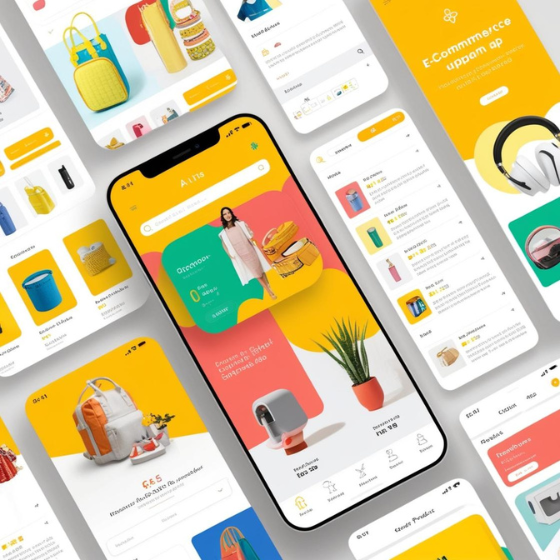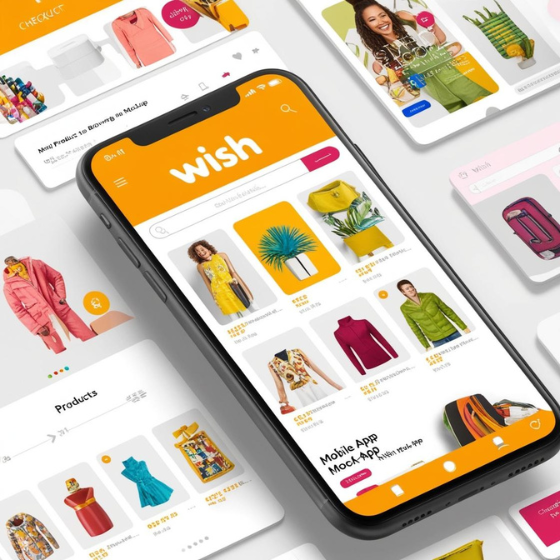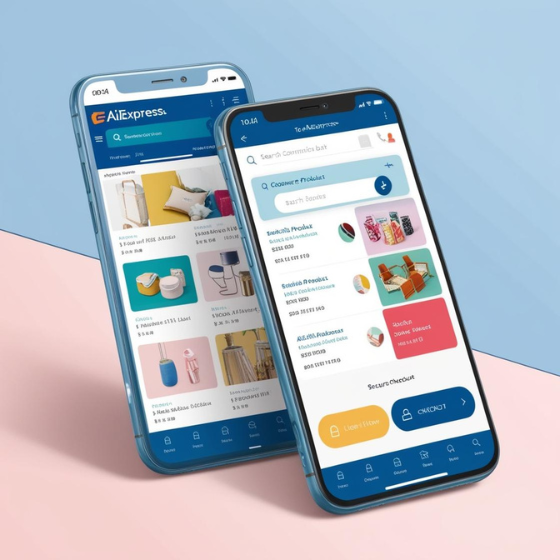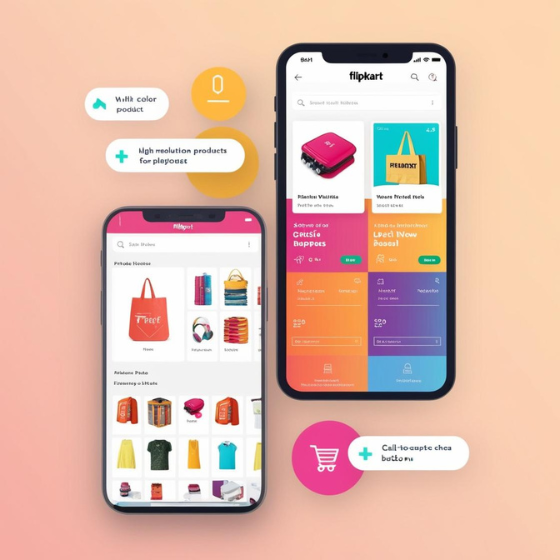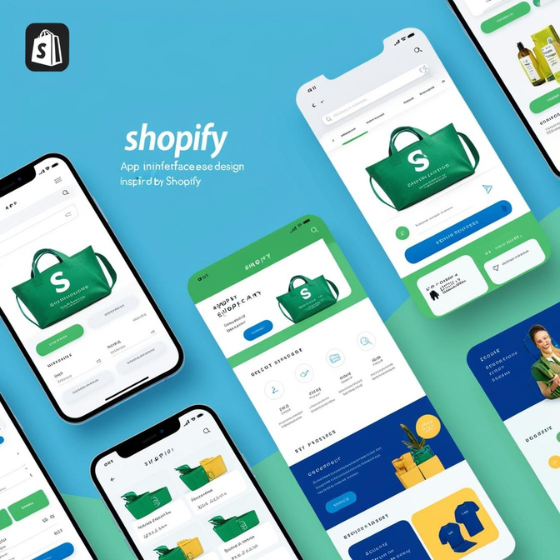How to Make an App Like Alibaba
The e-commerce world has evolved at an astonishing pace over the last few years, and platforms like Alibaba are leading the charge. Did you know that Alibaba’s annual revenue surpassed $130 billion in 2023, reflecting the growing global demand for online marketplaces? If you’re wondering how to make an app like Alibaba, you’re not alone. With its massive success, Alibaba has set the bar high for anyone looking to create an app that connects buyers and sellers across the globe. In this blog, we’ll break down the key steps and insights you need to know when building an app like Alibaba, from ideation to development and beyond.
By the end of this blog, you’ll have a clear understanding of what it takes to develop an app that can potentially transform the way businesses operate online. Whether you’re looking to build a marketplace for a niche audience or a global e-commerce platform, we’ll guide you through the process, offering valuable insights and actionable tips.
Why Build an App Like Alibaba?
Creating a platform similar to Alibaba might seem like a daunting task, but its benefits are undeniable. Alibaba has revolutionized the online shopping experience by providing a platform for businesses and individuals to connect in real-time. Its success has spurred countless entrepreneurs to ask, “How to make an app like Alibaba?”
One of the key reasons for building an app like Alibaba is the potential for large-scale profitability. As e-commerce continues to thrive, businesses are increasingly moving their operations online. In fact, the global e-commerce market is expected to surpass $6 trillion by 2024, creating a wealth of opportunities for digital platforms like Alibaba to thrive.
An app like Alibaba doesn’t just allow businesses to sell products; it opens up a whole world of B2B (business-to-business) and B2C (business-to-consumer) opportunities. But how do you create an app that can compete with such an established player? Let’s dive into the process.
Step 1: Define Your Target Audience and Business Model
Before you start coding or designing your app, it’s crucial to define who your target audience is and the business model you’ll adopt. Understanding these key aspects will help shape the overall design and functionality of your app.
- Identify your niche: Alibaba serves a broad audience globally, but what’s your focus? Are you aiming for a global marketplace, or will your app cater to a specific market like local businesses, specific industries, or product categories? This decision will significantly impact how you develop your app.
- Choose your business model: Alibaba operates primarily on a commission-based model where it takes a percentage of each transaction. Other options include subscription models, advertising-based revenue, or premium account features.
By defining your target audience and business model early on, you’ll lay the groundwork for building an app that meets the specific needs of your users.
Step 2: Choose Key Features and Functionality
Once you’ve defined your audience and business model, the next step in how to make an app like Alibaba is identifying the key features and functionality your platform should offer. Alibaba offers a comprehensive range of features that allow businesses to thrive, and replicating this model will require thoughtful planning and feature selection.
Some of the essential features include:
- User profiles: Allow users to create personalized profiles that detail their business information, products, or services.
- Product listings: A robust system for sellers to upload and manage their products, including descriptions, prices, images, and shipping options.
- Payment gateway integration: Secure payment options are crucial for an e-commerce app. Ensure that you integrate reliable payment gateways to process transactions.
- Ratings and reviews: Allow customers to rate and review products or sellers. This builds trust and credibility for your platform.
- Real-time messaging: Communication between buyers and sellers should be seamless. A built-in messaging system can help facilitate negotiations, inquiries, and customer support.
As you add features, it’s important to ensure that your app is both user-friendly and scalable. Building an app like Alibaba means catering to a large volume of users, so scalability should be at the forefront of your development plan.
Step 3: Design and User Experience (UX)
User experience is everything in today’s competitive app market. A seamless and intuitive design is essential if you want users to engage with your platform and return time and time again.
- Mobile-first design: Many users will access your app from their smartphones, so it’s essential to design with mobile users in mind. A mobile-first approach ensures that your app works flawlessly across various devices and screen sizes.
- Easy navigation: Keep the design simple and ensure that users can easily navigate through categories, product listings, and checkout processes.
- Fast loading times: Slow apps can turn users away. Focus on optimizing the app’s speed to improve the overall experience.
- Personalization: Offer personalized recommendations based on user behavior and preferences. This feature not only enhances the user experience but can also drive sales by suggesting products that customers are likely to buy.
Step 4: Choose the Right Technology Stack
To build an app like Alibaba, choosing the right technology stack is essential. Alibaba uses a combination of technologies to ensure high performance, scalability, and security. You’ll need to decide on:
- Frontend development: HTML, CSS, JavaScript, and frameworks like React or Angular will help create an interactive and engaging user interface.
- Backend development: A robust backend is necessary for handling large amounts of data and traffic. Technologies such as Node.js, Python, Ruby on Rails, or PHP are popular choices for building scalable e-commerce platforms.
- Cloud infrastructure: Cloud hosting services like AWS, Microsoft Azure, or Google Cloud can provide the necessary resources to handle the growing traffic on your app.
Choosing the right tech stack will ensure that your app is scalable, secure, and capable of handling the demands of your users.
Step 5: Testing and Launch
Before launching your app, extensive testing is essential to ensure its functionality and performance. Conduct various types of testing, including:
- Usability testing: Ensure that users can easily navigate your app and that all features work as expected.
- Security testing: Since you’ll be handling sensitive payment information, make sure your app is secure from potential breaches.
- Load testing: Test how your app performs under high traffic conditions to ensure it can handle large numbers of users simultaneously.
Once you’re confident that everything is working as it should, you can launch your app to the public. But the launch is just the beginning. Continuously monitor your app, fix any bugs, and release regular updates to keep users engaged.
Step 6: Marketing and Growth
After launching your app, the next challenge is marketing it effectively to attract users. Here are a few strategies to help you grow your user base:
- Content marketing: Create valuable content around your app, such as blogs, case studies, and success stories, to attract organic traffic. At Sodio, we specialize in digital marketing strategies that can help promote your e-commerce app.
- Social media: Leverage social media platforms like Instagram, Facebook, and LinkedIn to drive traffic to your app and build a community around your platform.
- SEO optimization: Optimize your app’s website for search engines to ensure users can easily find it when searching for keywords related to your platform.
By combining a strong marketing strategy with the right features and functionalities, you can effectively grow your user base and establish your app as a reliable e-commerce platform.
Bringing Your E-Commerce Vision to Life
Building an app like Alibaba requires careful planning, execution, and ongoing optimization. By understanding the key features, technology stack, and marketing strategies necessary to make an app like Alibaba, you can set your platform up for long-term success.
Ready to bring your e-commerce app to life? At Sodio, we specialize in creating customized apps tailored to your business goals. Whether you’re looking to build a marketplace from scratch or need assistance with app development, our team is here to help. Contact us today to learn more about how we can turn your vision into reality!
